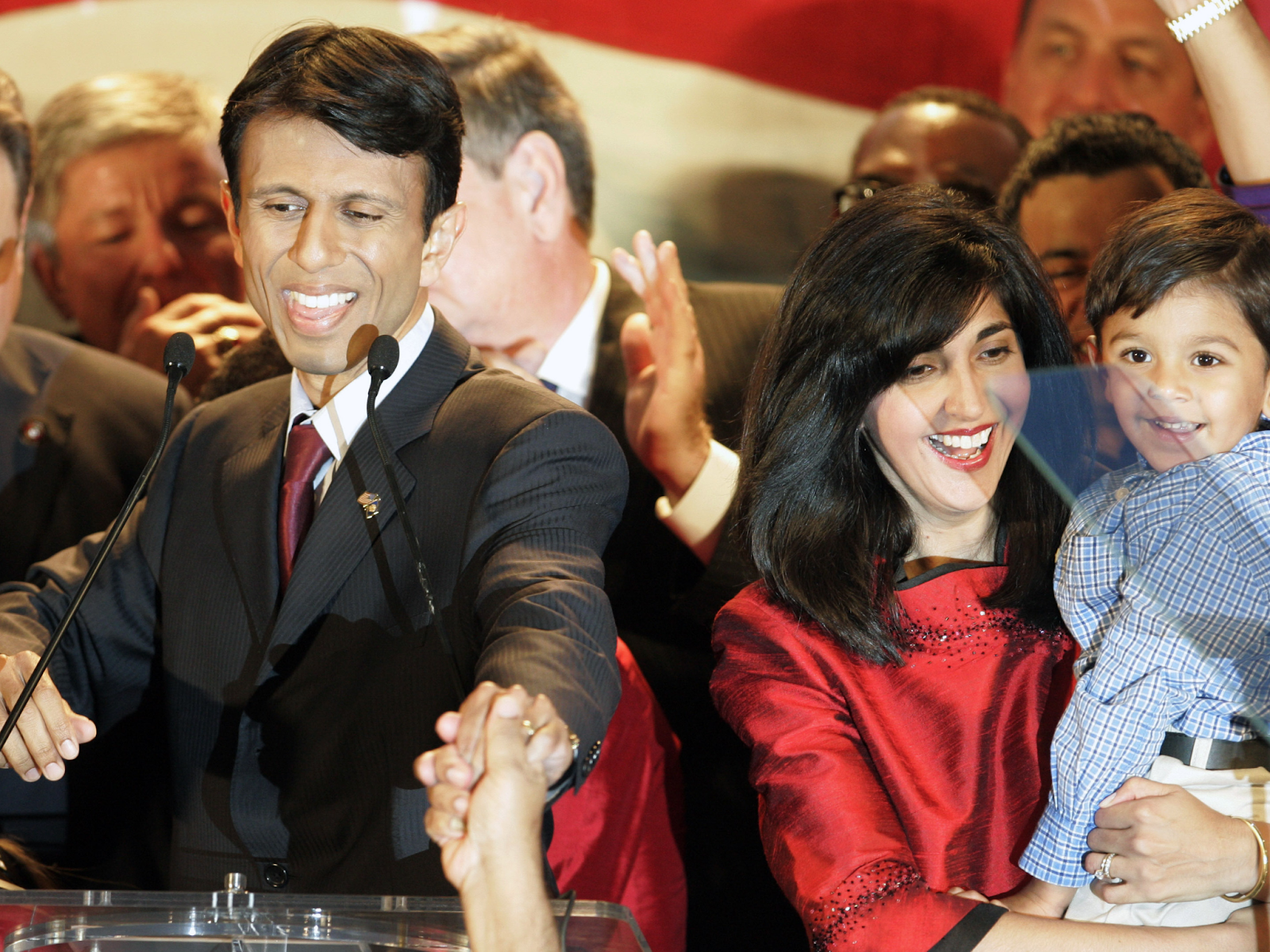RepresentAsian in American Government: Highlighting Asian Americans in Politics
Asian Americans, Native Hawaiians and Pacific Islanders (AANHPI) have played a crucial role in shaping the American government and our public sector, contributing significantly to the nation's political landscape. However, the number of AANHPI elected officials currently in government is small relative to the percentage of the resident population, which suggests that Asian voices are underrepresented in politics.
While Asian Americans make up approximately 7% of the US adult population, only 2% of Senators and 3% of Representatives are Asian. Furthermore, there have only been three Asian American governors in U.S. history to date:
George Ariyoshi of Hawaii from 1974 to 1986
Bobby Jindal of Louisiana from 2008 to 2016
David Ige of Hawaii from 2014 to 2022.
Lack of representation in these positions of political power can make us feel ‘othered,’ suggesting that we may not belong at the helm of government leadership. Consequently, Asian Americans can feel disillusioned or disappointed that we don’t see elected officials who look like us or understand our needs.
This is why it’s even more important during an election year to honor the trailblazers who have represented the Asian American community in politics, regardless of our political beliefs and preferences. By shedding light on the early figures who led the way for Asian electoral representation, we hope to inspire future generations of civic leaders. This article highlights key figures and elected officials that have defined our political representation, and what it means for our sense of belonging, inclusion, and identity.
Early Beginnings and Challenges
(Mid 1800s to Early 1900s)
Did you know certain people of Asian descent weren’t allowed to be U.S. citizens in the 19th century and early 20th century, let alone be elected into public office?
Asian immigrants began traveling to the United States in significant numbers during the mid-1800s, inspired by the Gold Rush and dreams for a better life. 20,000 Chinese immigrants arrived in California in 1852, a sizable increase from the 325 Chinese people in 1848. This surge in migration led to a backlash from non-Asian workers who perceived the new migrants as a threat to their wages, despite Chinese workers contributing $5 million through the Foreign Miners Tax and representing only 0.002% of the country’s population.
Photo credit: California State Library
The Chinese Exclusion Act of 1882 severely restricted immigration into the US and, in 1902, Chinese immigration was made permanently illegal. Later, this spurred future immigration restriction movements for other groups including the Japanese, Hindu and East Indians with the Immigration Act of 1924. It wasn’t until 1943 that Chinese immigrants and their American-born families became eligible for citizenship.
Photo credit: PBS SoCal showing a racist advertisement after the Chinese Exclusion Act
With citizenship came the cherished right to vote. Since then, Asian American have experienced increasing voter participation and civic activism. In recent years, Asian American voter participation rates have shown a significant upward trend. According to the U.S. Census Bureau, the turnout rate among Asian American voters in presidential elections increased from 49% in 2016 to 59% in 2020. This surge reflects a growing awareness and engagement within the AANHPI community regarding the importance of civic involvement.
Organizations such as APIAVote and the National Asian American Survey have been instrumental in mobilizing voters, advocating for voter rights, and addressing issues prevalent in the AANHPI population.
Pioneering Political Figures (Mid 1900s)
Dalip Singh Saund
Photo Credit: Britannica
One of the most notable early figures was Dalip Singh Saund, the first Asian American, Indian American, and Sikh American elected to the U.S. Congress. Elected in 1956 to represent California's 29th district, Saund served from 1957 to 1963. His victory was a monumental achievement that paved the way for future generations of Asian Americans in politics. His work focused on immigration reform and civil rights, advocating for greater inclusion and equality.
Patsy Mink
Photo credit: University of Hawaii
Patsy Mink, a trailblazer for both women and Asian Americans, became the first woman of color and the first Asian American woman elected to Congress in 1964, representing Hawaii. She served from 1965 to 1977 and then again from 1990 to 2002. Mink was a staunch advocate for gender equality and education, co-authoring the landmark Title IX legislation, which prohibits gender discrimination in federally funded education programs.
The Rise of AANHPI Political Influence
(Late 1900s to Early 2000s)
Norman Mineta
Norman Mineta's political career is another testament to the growing influence of AANHPI individuals in American government. Serving as both a congressman from California (1975 to 1995) and a cabinet member under Presidents Bill Clinton (Secretary of Commerce, 2000 to 2001) and George W. Bush (Secretary of Transportation, 2001 to 2006), Mineta was instrumental in championing civil rights and transportation safety, leaving a lasting legacy in both areas.
Bobby Jindal
Photo Credit: NPR
Bobby Jindal made history as the first Indian American governor in the United States, serving as the governor of Louisiana from 2008 to 2016. Before that, Jindal represented Louisiana's 1st congressional district in the U.S. House of Representatives from 2005 to 2008.
Jindal was known for his fiscal conservatism. He advocated for tax cuts and worked to balance the state budget without raising taxes, often making significant budget cuts to state programs. Jindal gained a national profile within the Republican Party and was considered a potential candidate for higher office, including a brief run for the Republican nomination for president in 2016.
Recent Milestones and Future Prospects
(Present Day)
Kamala Harris
Photo Credit: The White House
Kamala Harris has a notable record of political accomplishments that span her career as a San Francisco district attorney, California Attorney General, U.S. Senator, and Vice President.
Kamala Harris's election as Vice President in 2020 marked a historic milestone for Asian Americans in politics. As the daughter of an Indian mother and Jamaican father, Harris's rise to the second-highest office in the country underscores the growing political clout of the AANHPI community.
Before becoming Vice President, Harris served as the Attorney General of California from 2011 to 2017, where she was known for her work on criminal justice reform, including efforts to reduce recidivism and address racial disparities in the justice system. After the 2008 mortgage crisis, Harris played a crucial role in securing a $20 billion settlement for California homeowners hit hard by the foreclosure crisis, part of a broader national mortgage settlement.
Elected to the U.S. Senate in 2016, she served until 2021 and continued her advocacy for justice and equality, focusing on issues such as healthcare, immigration, and criminal justice reform during her tenure.
Mazie Hirono
Photo Credit: WomenCount
Mazie Hirono, the first Asian American woman elected to the U.S. Senate, has been a vocal advocate for healthcare reform, immigration, and veterans' issues. Representing Hawaii, Hirono has served in the Senate since 2013.
When she was in the House of Representatives from 2007 to 2013, her major achievements included introducing the PRE-K Act, which aimed to improve early childhood education by providing grants to states to establish or expand high-quality preschool programs. She was also strong advocate for environmental conservation and supported measures to protect Hawaii’s natural resources. Additionally, Hirono worked on legislation to support immigrant communities, including advocating for the rights of Filipino veterans of World War II.
Andrew Yang
Photo Credit: CNN
Andrew Yang, an entrepreneur and political commentator, made significant contributions to American politics, particularly through his 2020 presidential campaign. He brought attention to issues like universal basic income (UBI), which he called the "Freedom Dividend," proposing a monthly payment of $1,000 to every American adult. Yang's campaign highlighted the challenges of automation and artificial intelligence on the future workforce, advocating for forward-thinking policies to address economic displacement. Additionally, his focus on data privacy, healthcare reform, and innovative economic policies helped to broaden the national conversation on how to prepare for a rapidly changing economy. Despite not securing the Democratic nomination, Yang's ideas have influenced political discourse and inspired a movement advocating for new economic approaches in the digital age.
The Road Ahead
The history of Asian Americans in politics is rich with pioneering figures and significant achievements that have shaped the American political landscape.
The increasing participation of Asian Americans in politics not only reflects broader demographic trends (Asian Americans are one of the fastest growing racial groups) but also the strengthening confidence among Asian American voters to advocate for our unique needs. Contrary to stereotypes of Asian Americans being quiet, meek and unassuming, we as Asian Americans are taking up space in the public discourse.
As we navigate our own mental health and wellbeing, we are able to better understand identities and, accordingly, make clearer demands with stronger conviction in the political arena. The journey of AANHPI individuals in the American government is a testament to our resilience, dedication, and commitment to building a more inclusive and representative democracy. The future holds even greater promise for Asian Americans in politics.










